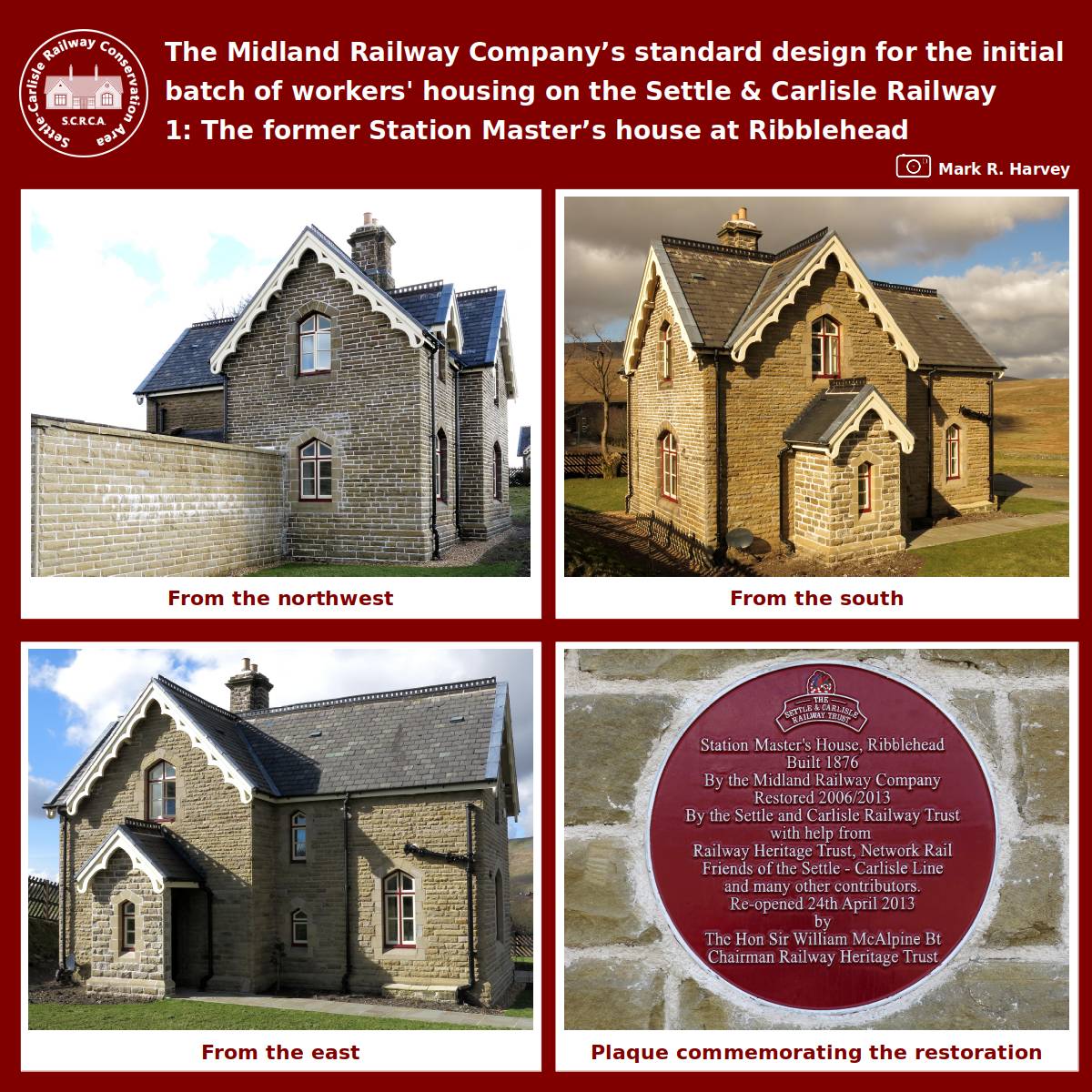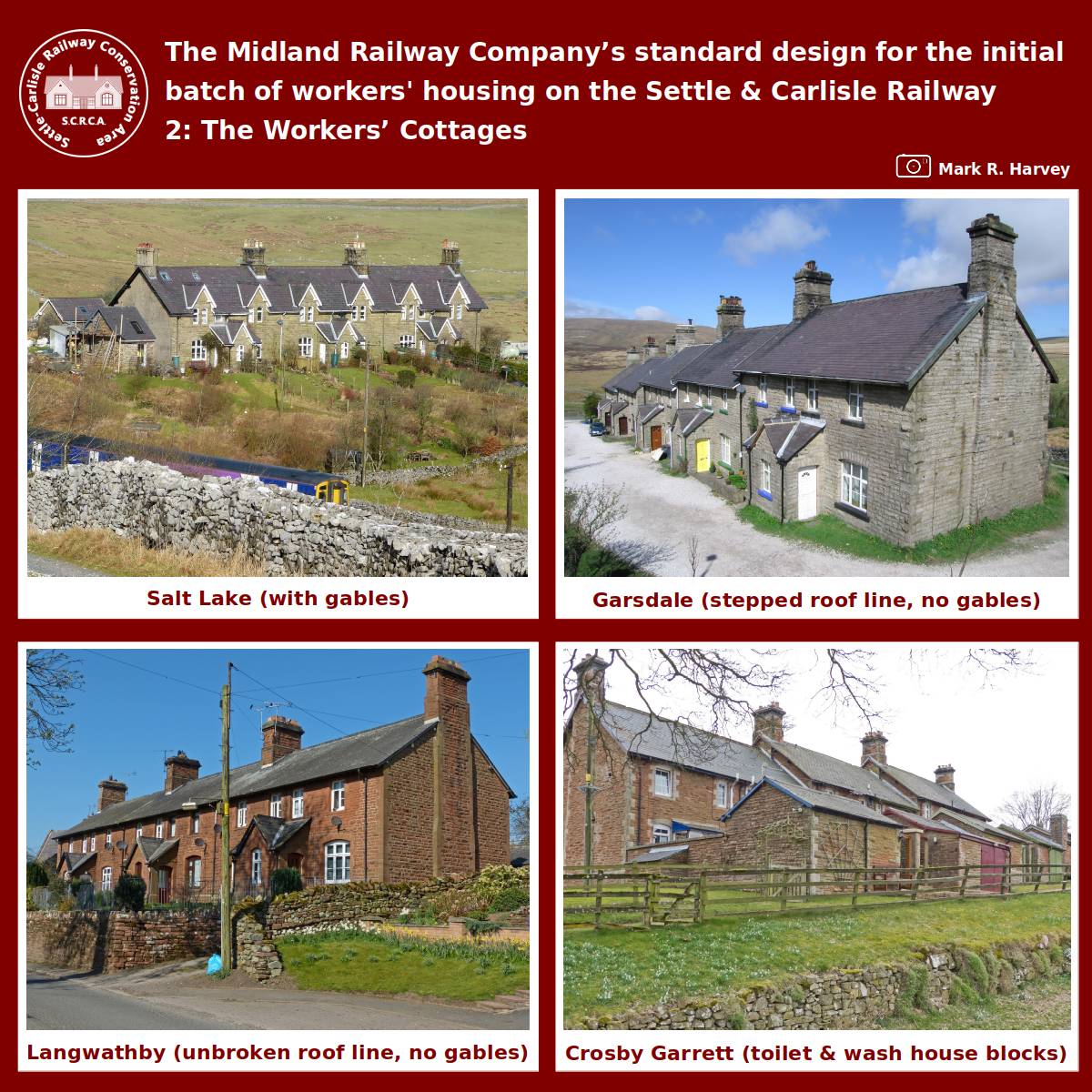In order to attract, retain and motivate a high quality labour force, the Midland Railway Company constructed houses at strategic locations along the route of its Settle & Carlisle Railway. The most easily identifiable (and arguably the most attractive) examples are the three standard types that were built in 1875-6 during the final phase of the line's construction.
These took three forms:
#1: Station Master's houses.
#2: Workers' cottages with gables above first-floor dormer windows (on front elevations only).
#3: Workers' cottages without gables / dormers.
This initial set of residential buildings were built by multiple independent contractors, but they share a set of common design characteristics that are similar to those found on the standard booking office buildings.
The standard Station Master's houses were built as substantial detached dwellings with:
- masonry (stone or brick) walls;
- pitched slated roofs with overhanging eaves;
- gables on all elevations;
- two tall chimney stacks;
- casement windows with segmental heads (except at Dent);
- a single first-floor dormer window; and
- a main entrance porch with pitched roof.
Both both left- and right-handed forms were built (to suit the site) and examples can be seen at Settle, Horton-in-Ribblesdale, Ribblehead, Dent, Kirkby Stephen, Crosby Garrett, Ormside, Appleby, Long Marton, New Biggin, Langwathby, Little Salkeld, Lazonby & Kirkoswald, Armathwaite, Cotehill, Cumwhinton and Scotby.
The standard workers' cottages were built in either semi-detached or terraced form with:
- masonry (stone or brick) walls;
- pitched slated roofs with overhanging eaves
- tall chimney stacks;
- a gable above a single- or double-window first-floor dormer (one per dwelling, #2 only); and
- for each pair of dwellings, an unusual gabled porch with a main entrance door in each side wall.
The terraced versions have roof lines that are uninterrupted when the structure is located on relatively level ground, or stepped when located on sloping ground. Examples can be seen at Settle, Horton-in-Ribblesdale, Selside, Salt Lake, Garsdale (Station & Moorcock), Grisedale, Ais Gill, Kirkby Stephen, Crosby Garrett, Ormside, Long Marton, New Biggin, Langwathby, Little Salkeld, Lazonby & Kirkoswald, Armathwaite, Cotehill, Cumwhinton and Petteril Bridge.
All three of the standard designs were built with separate toilet block(s), wash house blocks and enclosed yards to the rear.
Contemporary accounts suggest that the cottages were available to any of the Company's local employees (rather than being restricted to specific job roles). As an example, the 1876 edition of Wildman's Almanac (published in Settle) tells us that "At Settle new station ... Six cottages for signal-men, porters, etc., have been finished and are inhabited." and that "At Blea Moor there are .. two cottages for the use of signalmen and platelayers".
The Midland Railway Company also constructed a significant number of single- and two-storey cottages to simpler designs, probably at a later date when local housing shortages began to have a negative impact on staff recruitment or retention.
For additional examples, see the Location Type Defnition for Workers' Housing.
Acknowledgements
Text and photographs by Mark R. Harvey (© Mark R. Harvey, 2022).


